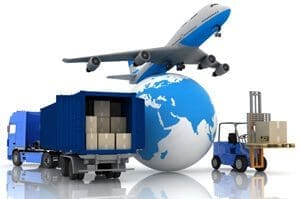 Transportation execution solutions allow shippers to connect to multiple carriers and then tender, track, and pay in the system. Visibility solutions allow real-time asset tracking across the entire distribution network. This enables improved estimated arrival times of goods.
Transportation execution solutions allow shippers to connect to multiple carriers and then tender, track, and pay in the system. Visibility solutions allow real-time asset tracking across the entire distribution network. This enables improved estimated arrival times of goods.
The transportation execution and visibility systems (TES) market has seen significant growth over the last few years due to a variety of factors, including the growth of e-commerce, the strong ROI tied to these solutions, the rise of control towers and visibility requirements, capacity fluctuations, and the expansion of ecommerce.
The TES market has grown significantly over the last few years. Leading suppliers are simply making better solutions, mostly by looking at a few key areas. The first is to enhance machine learning. Machine learning is shaping the visibility side of the market. Machine learning can be used to “learn” about constraints (capacity, regulations, hours of service, etc.) and properly plan shipments accordingly. This gives a much better estimated time of arrival of shipments to warehouses, stores, and end customers.
Suppliers are looking more to the cloud. SaaS solutions are driving the market, accounting for nearly 90 percent of all revenues. This is not a position that is going to change, and suppliers that are still locked into an on-premise model need to embrace the Cloud. While it features the same functionality as on-premise solutions, the Cloud offering opens up a larger pool of prospective clients, especially smaller tier 2 and tier 3 customers. Those companies that are currently deploying a SaaS model need to continue to innovate and push the bounds of their offering.
Finally, suppliers are focusing on the last mile. The last mile is the most difficult and most expensive part of the supply chain journey. The growth of e-commerce is only going to make the last mile more important. Better ETA and better visibility into when orders will arrive are a requirement.
There are a number of key factors that are driving growth in the market. Here are a few notable factors.
E-Commerce
The continued growth of e-commerce is putting more emphasis on last mile deliveries, and parcel execution is becoming more important. This is especially true as the COVID-19 pandemic has caused a surge in e-commerce. This also means that companies need more visibility into where products are, for a more accurate ETA. The rise of e-commerce has also made the economy more global in nature. This is turn has led to the need for consolidation and de-consolidation of shipments in an efficient manner. Transportation execution and visibility solutions can provide these efficiencies. E-commerce is also leading to a more open marketplace. Many manufacturers have seen that they can profit from selling directly to customers, rather than using retail channels like in the past. This is placing a bigger emphasis on parcel shipping and driving significant growth.
Return on Investment
Transportation execution and visibility solutions can lead to the selection of lower priced, higher service level carriers. The automation can decrease workloads in the transportation department. Visibility can increase service levels for customers, which increases revenues. In addition, parcel solutions have new features and functions that can be used to increase e-commerce sales.
Capacity Fluctuations
The often-reported driver shortage is not a problem that is going to disappear. However, the bigger issue is the continued shift in available capacity, which continues to be fragmented. The changing nature of capacity means shippers need access to capacity ahead of demand. Capacity is likely to continue to tighten as e-commerce continues to grow amid the COVID-19 pandemic.
New Types of Carriers
The emergence of digital freight matching services and crowdsourced last mile deliveries has opened up a whole new kind of carrier. Moreover, for larger packages, LTL carriers have begun to move into the parcel space. For last mile, the drivers are no longer just delivery persons; they are putting items together, taking away packaging when they leave. All this requires an additional level of efficiency from shippers and carriers.
Pace of Decision Making
The scale and pace of logistics decision making and operations is accelerating, which is driving automation. Manual procedures cannot keep pace with the agility needed to resolve everyday issues.

















